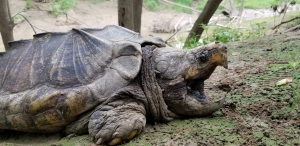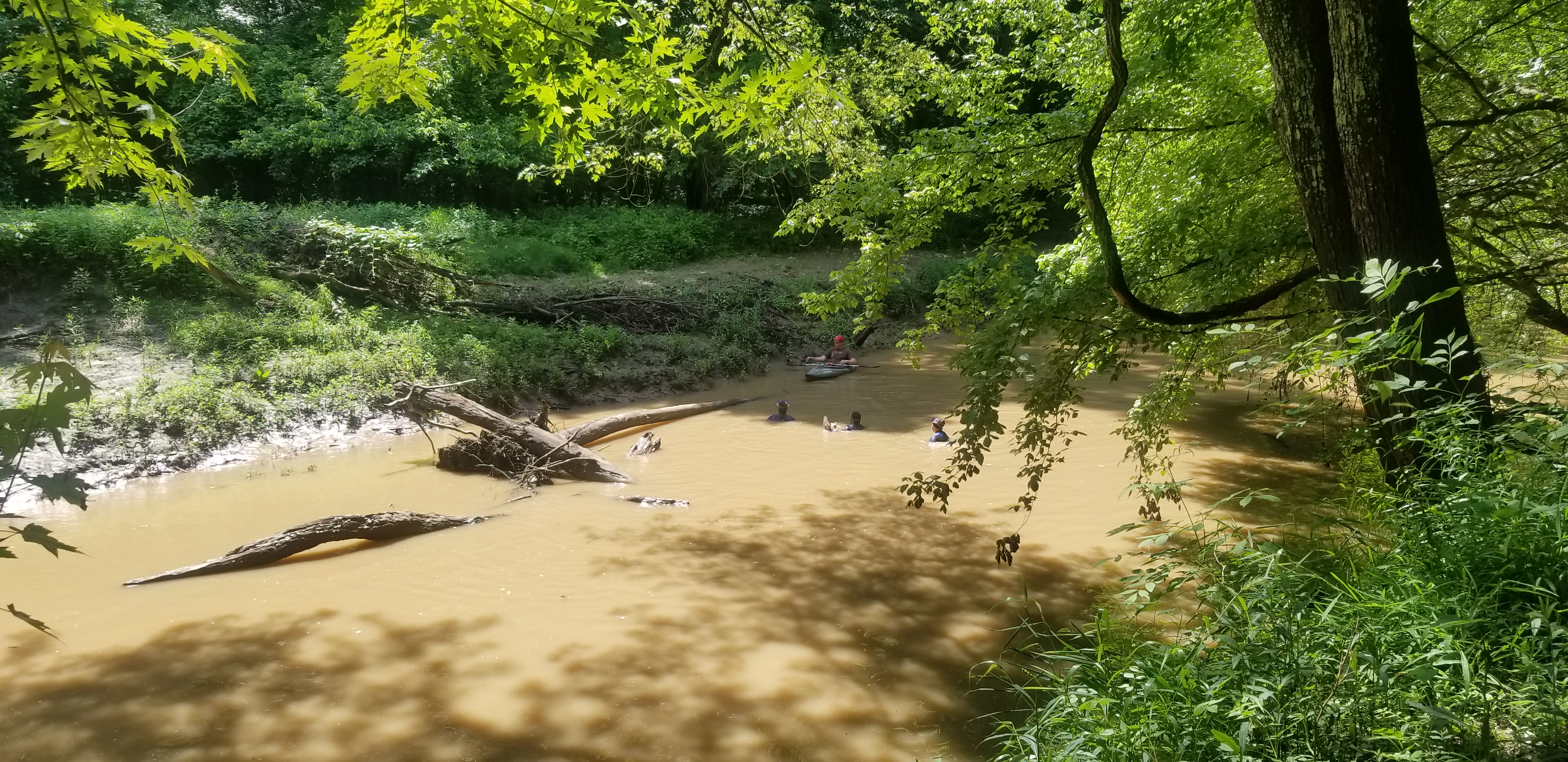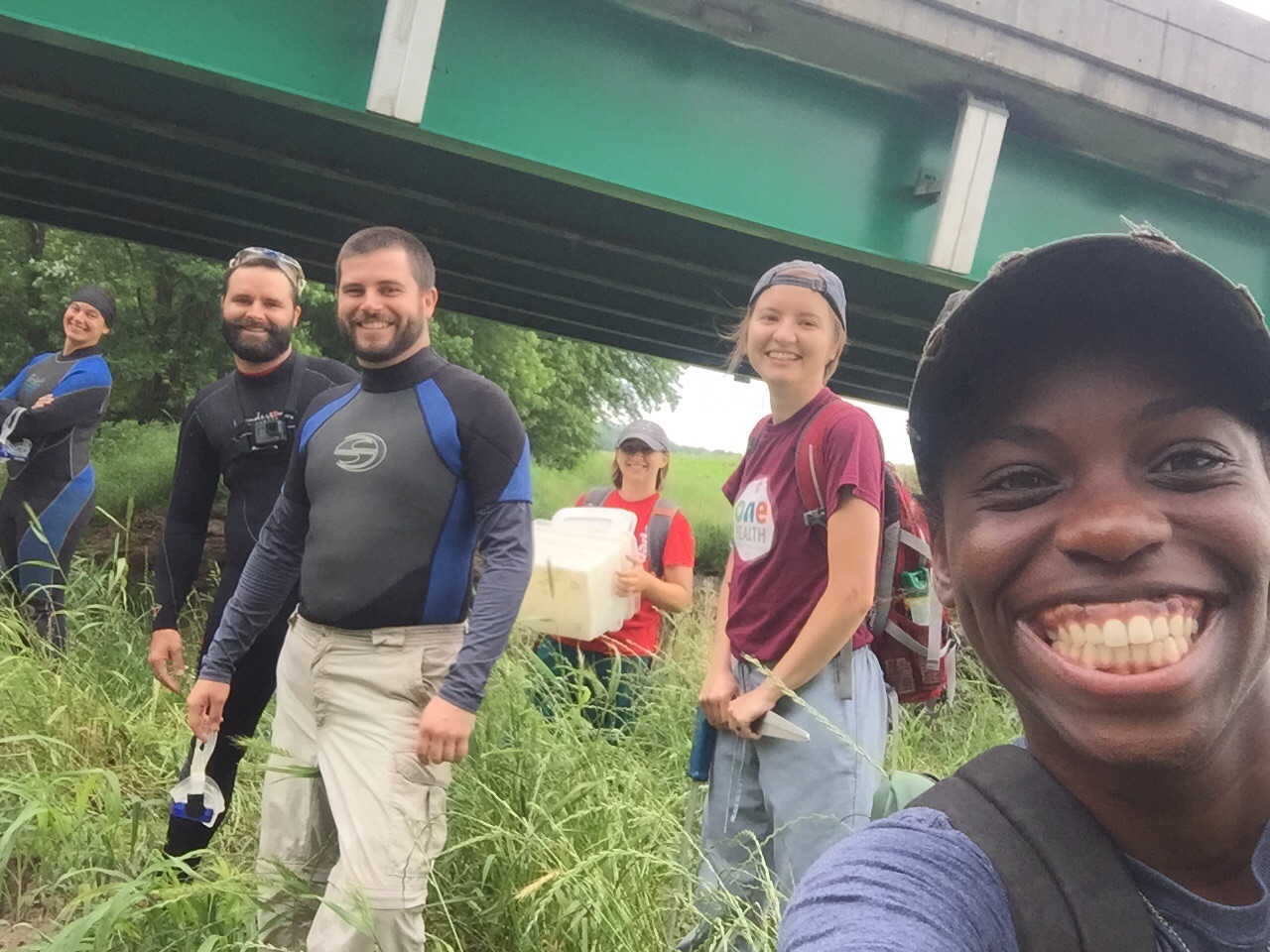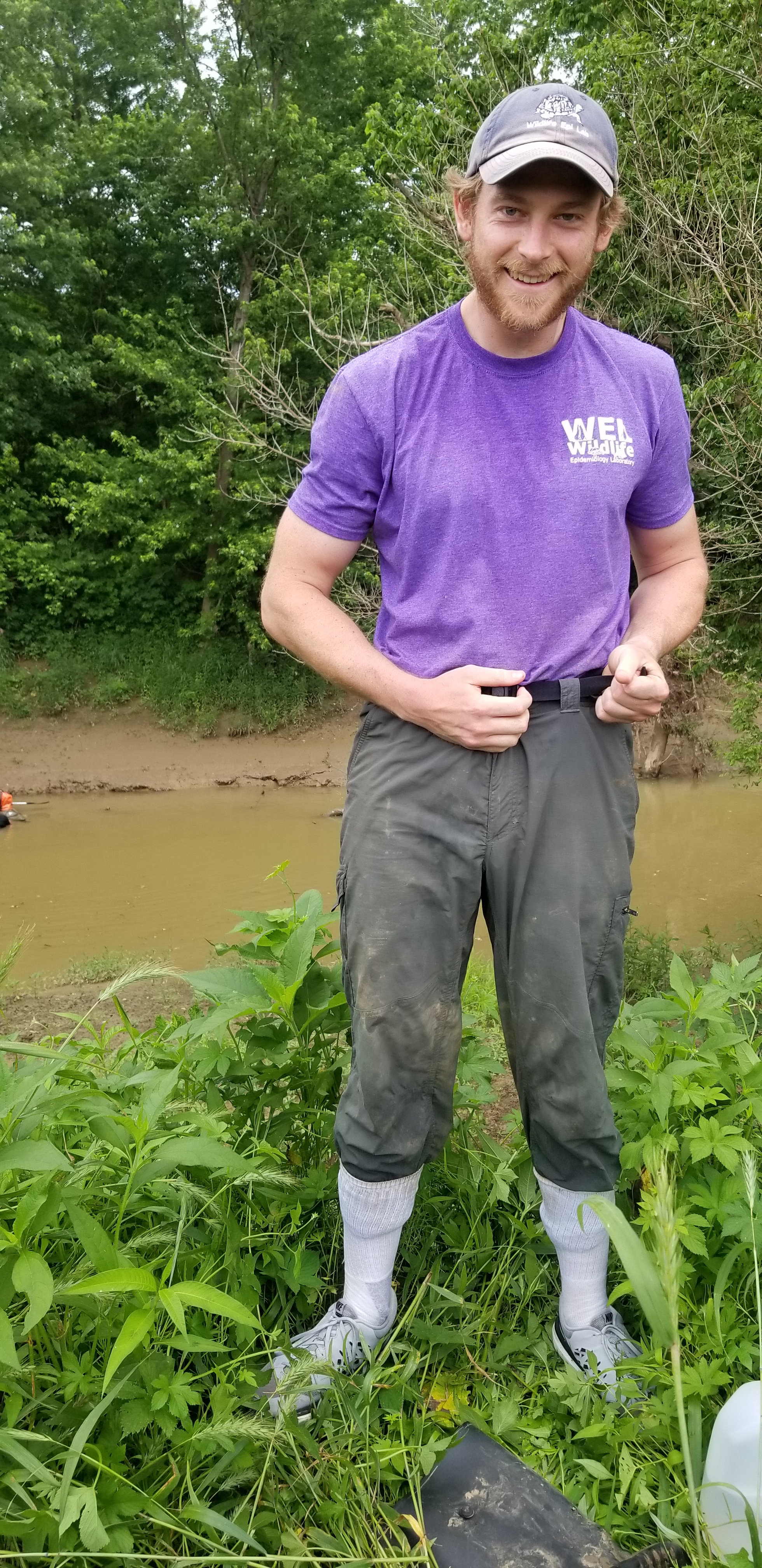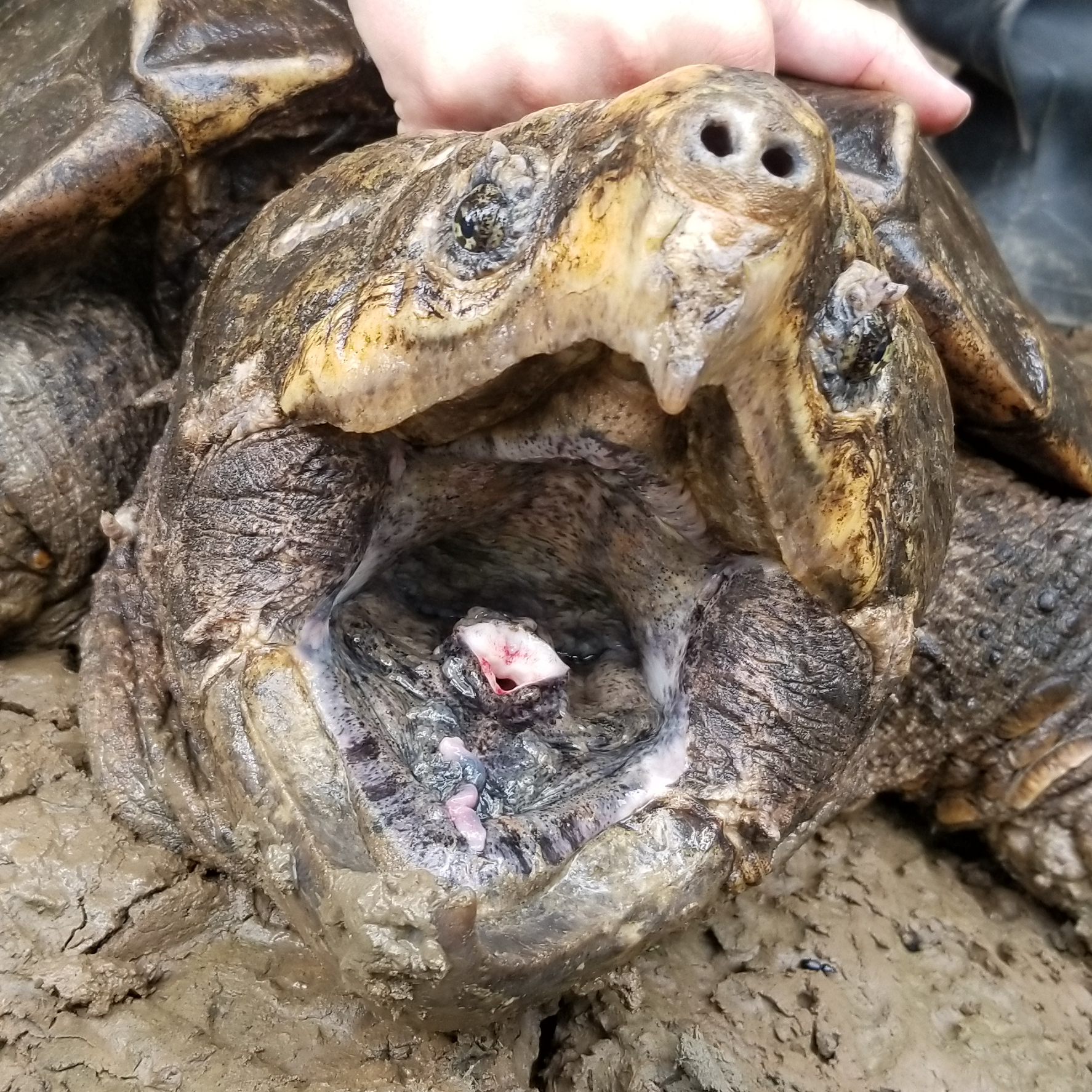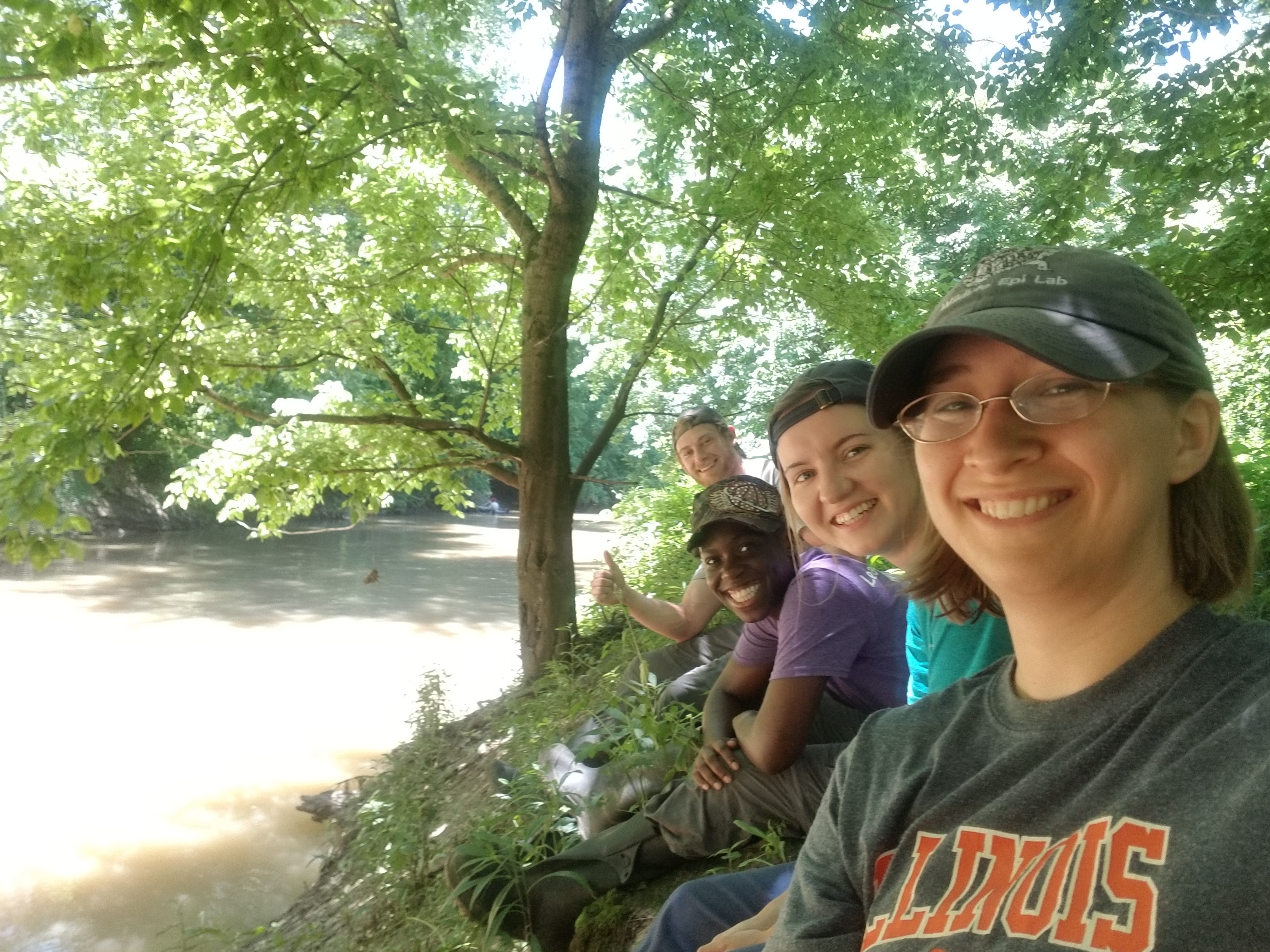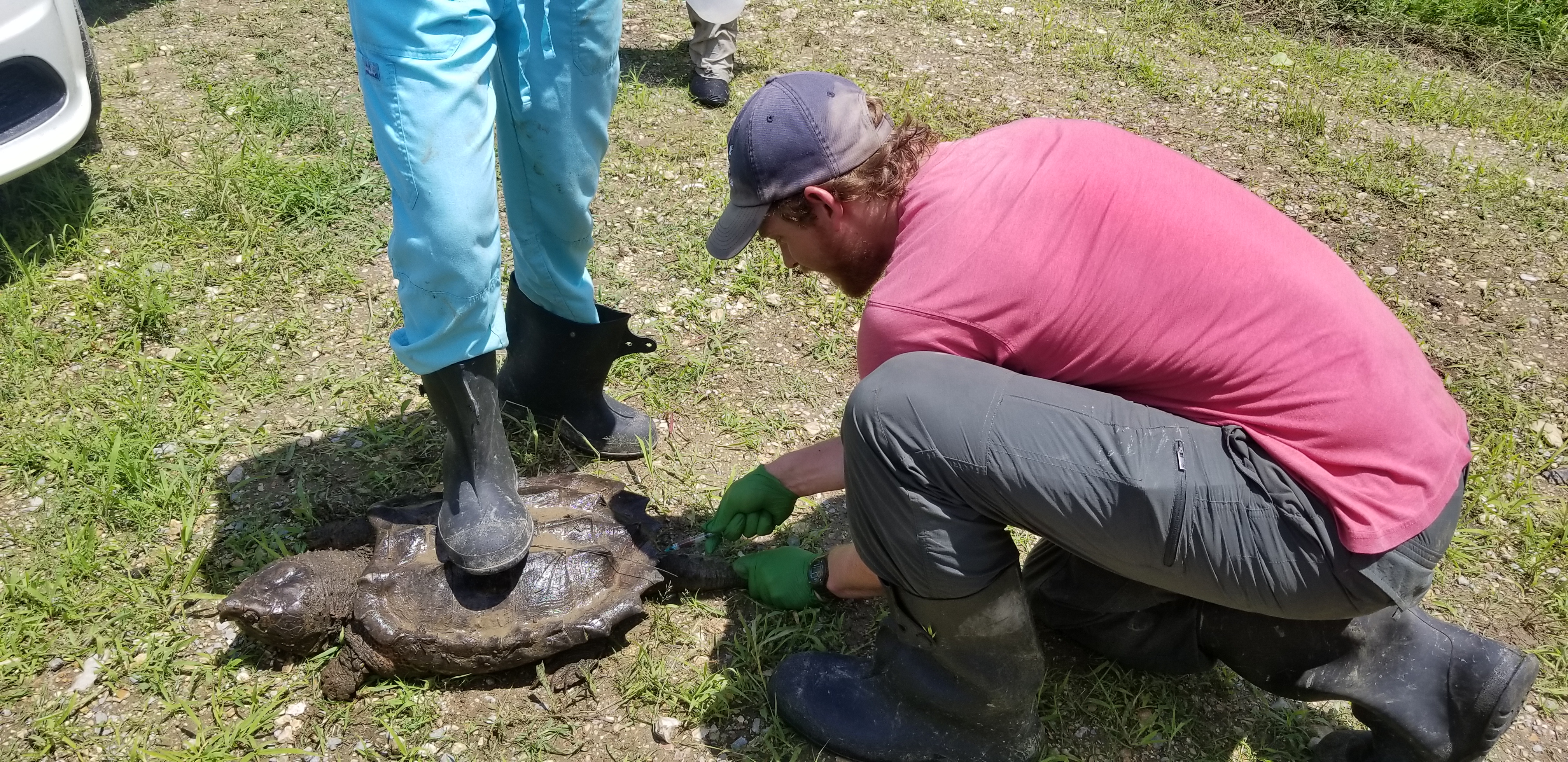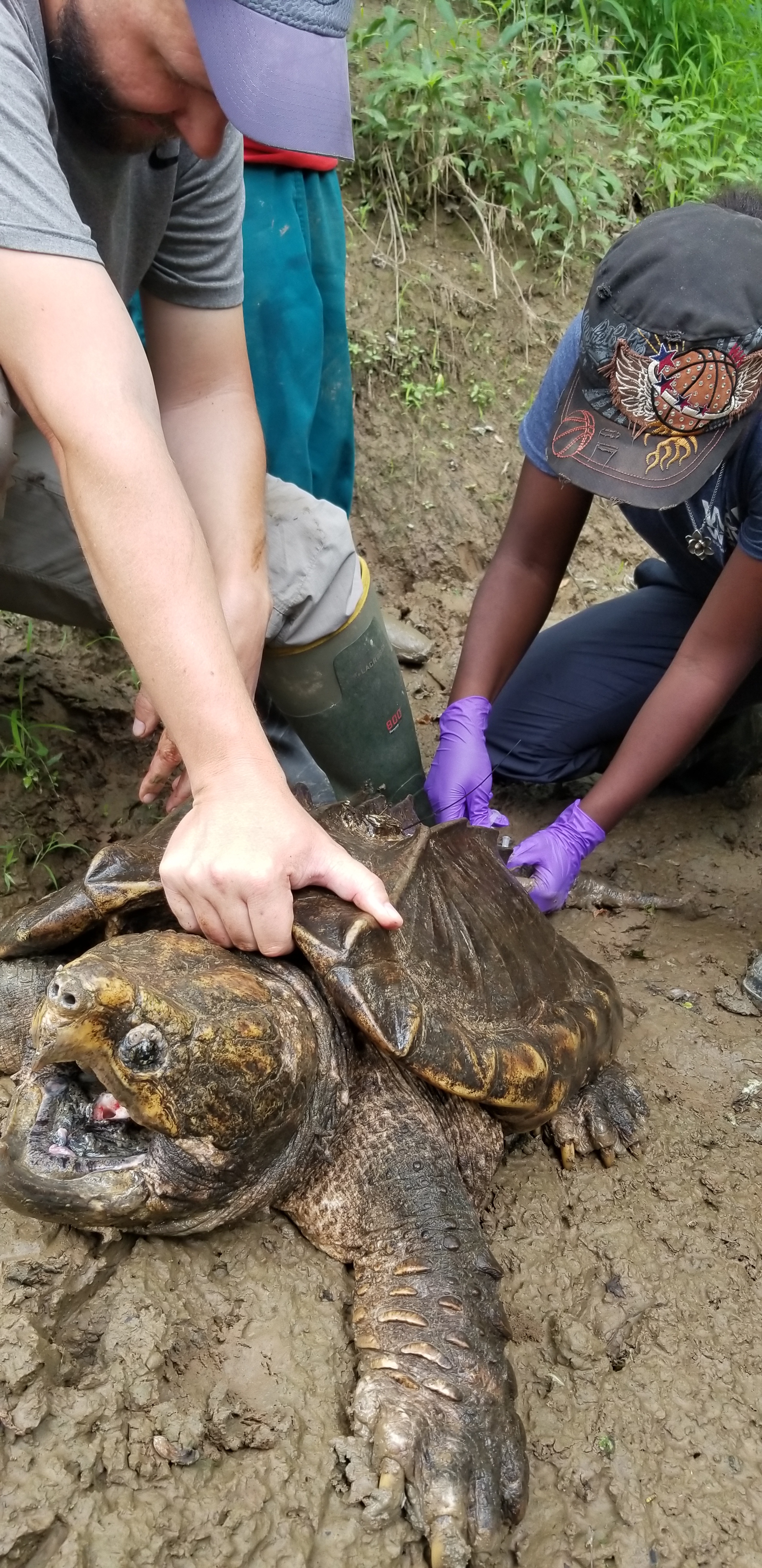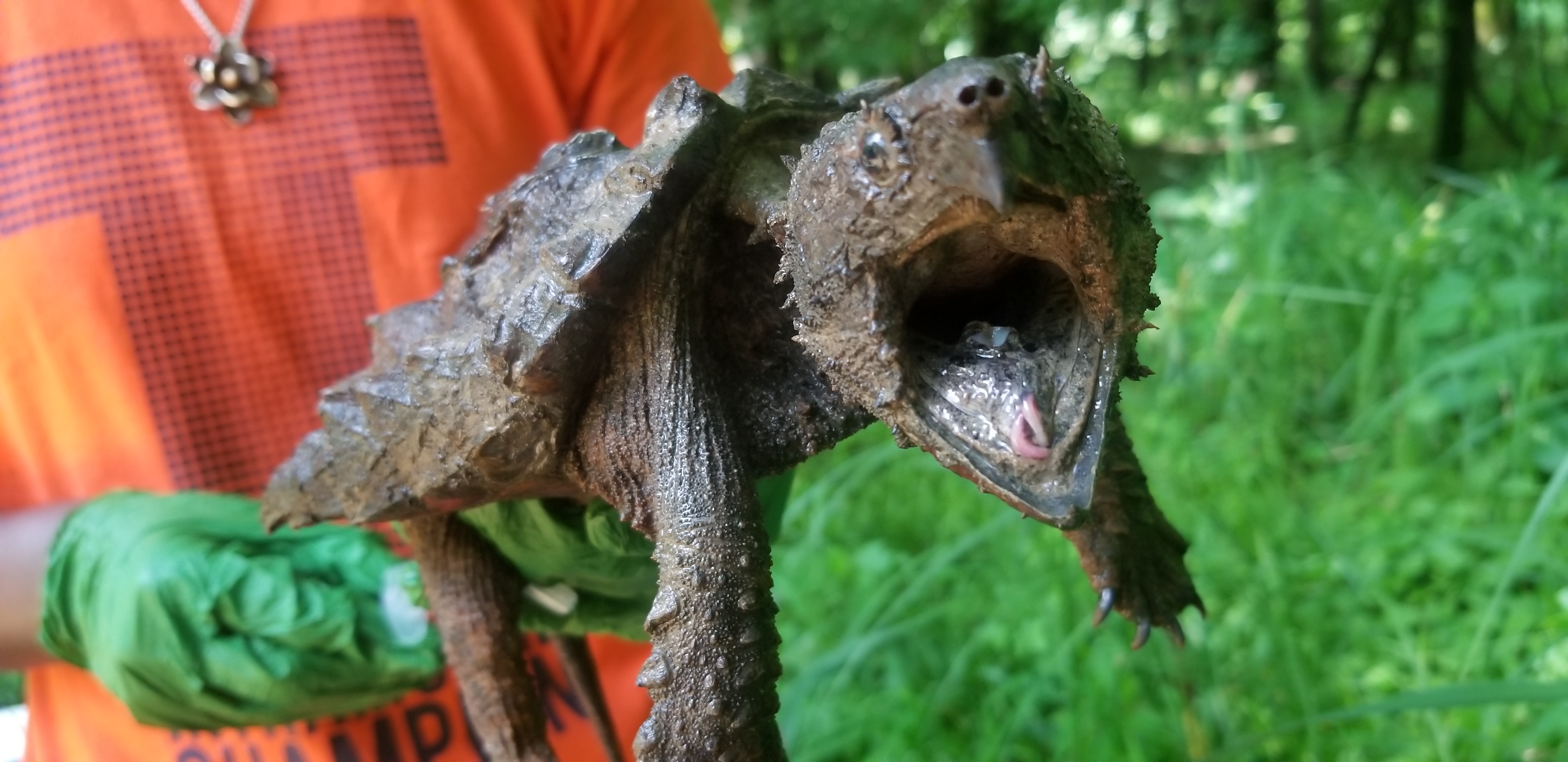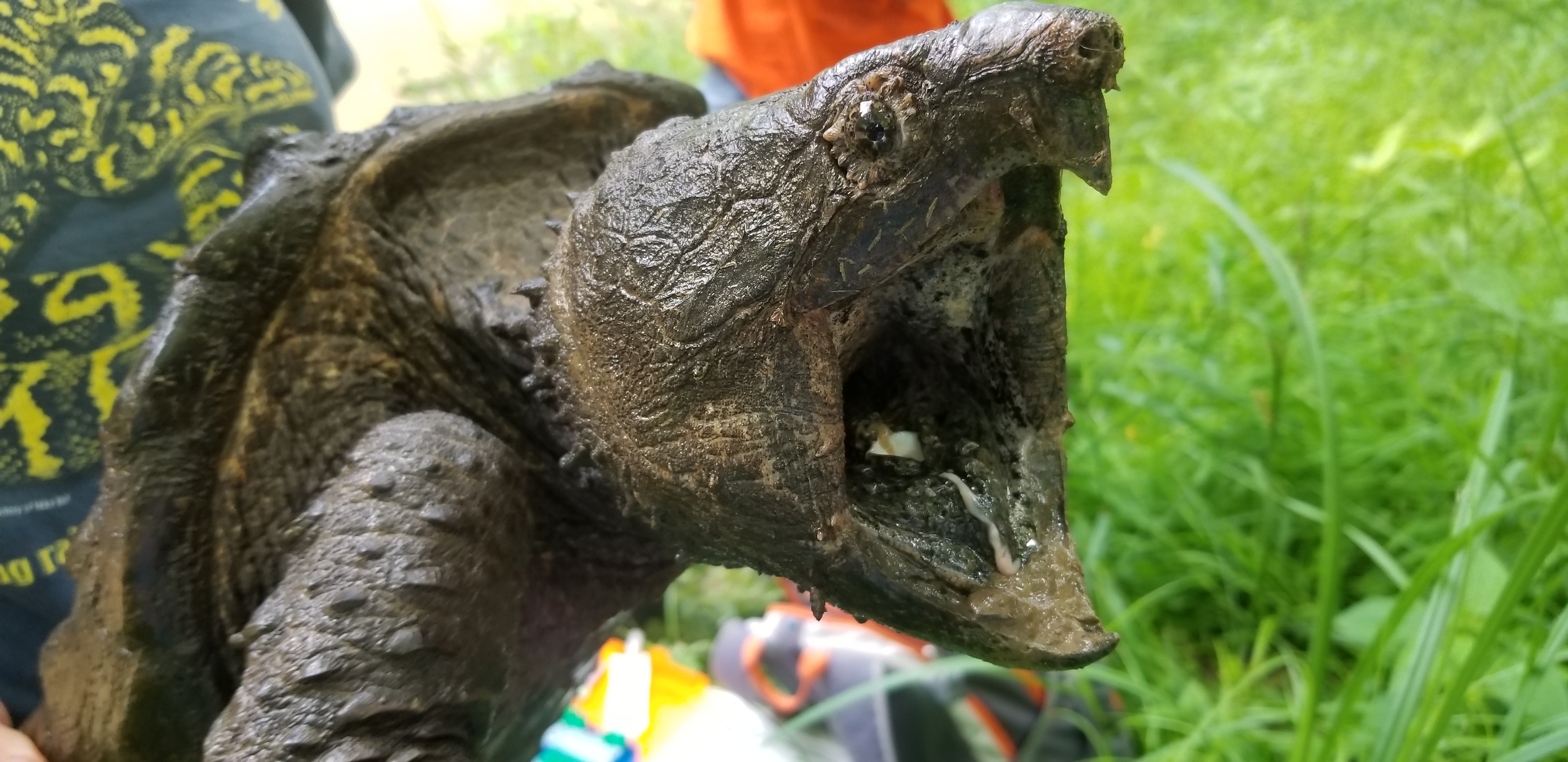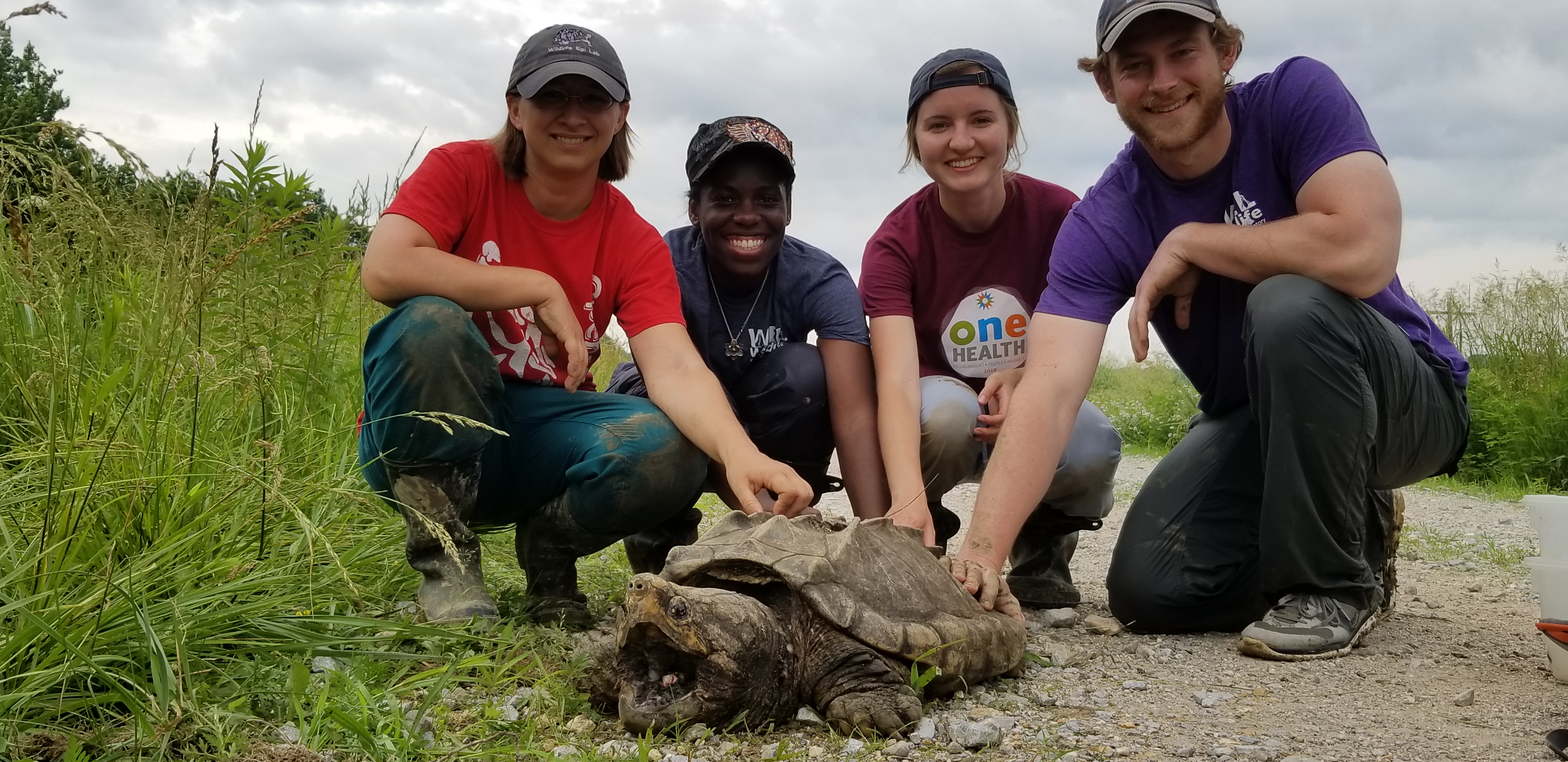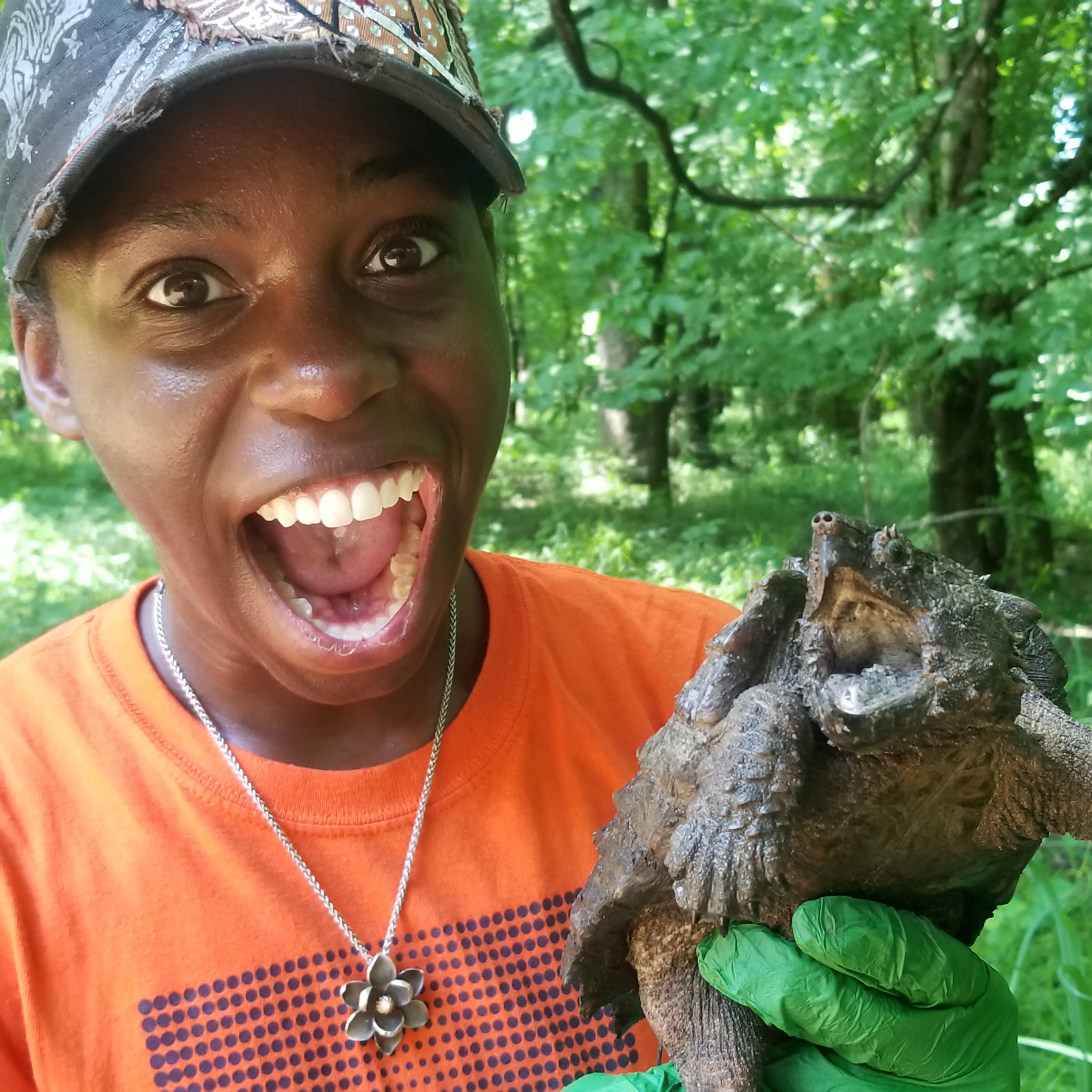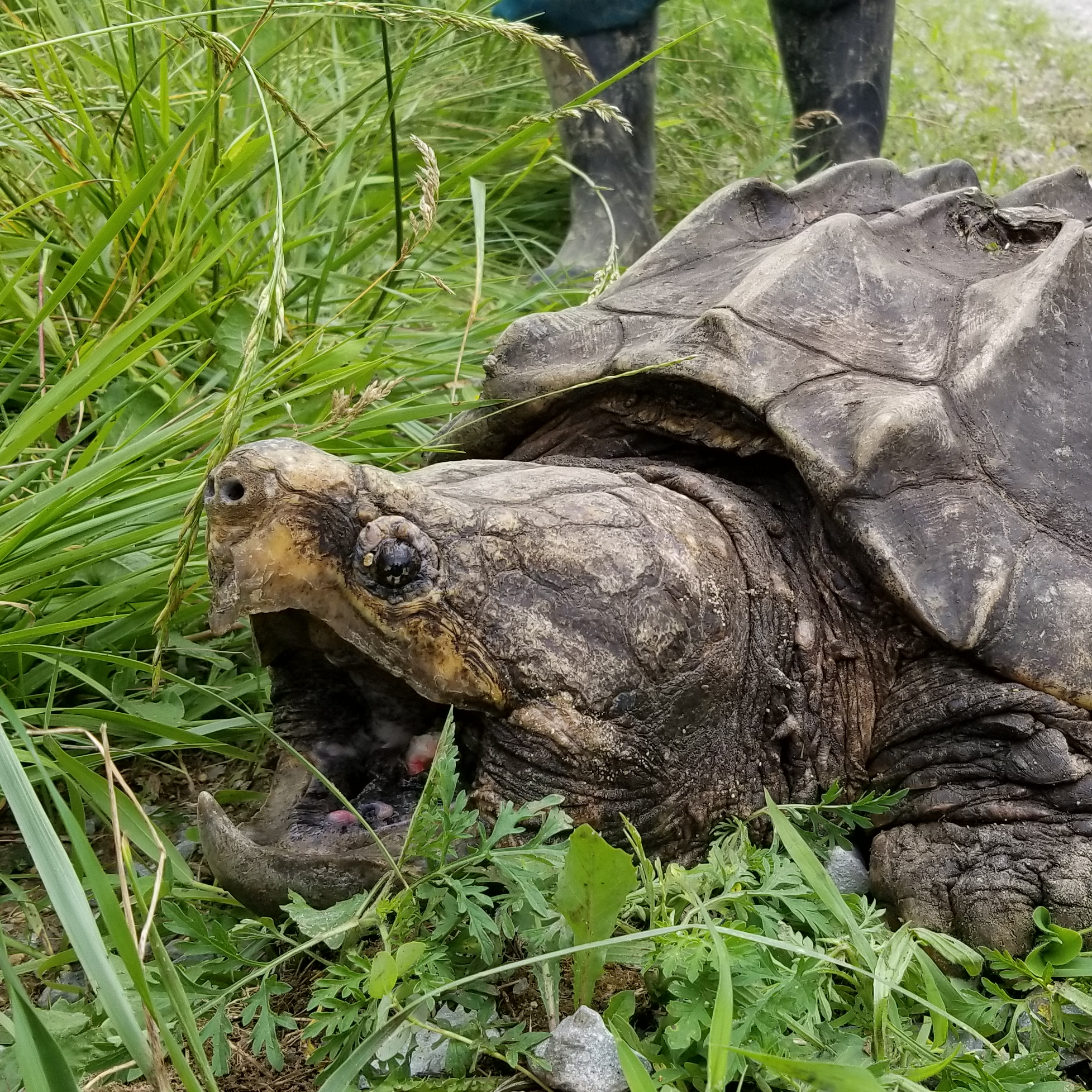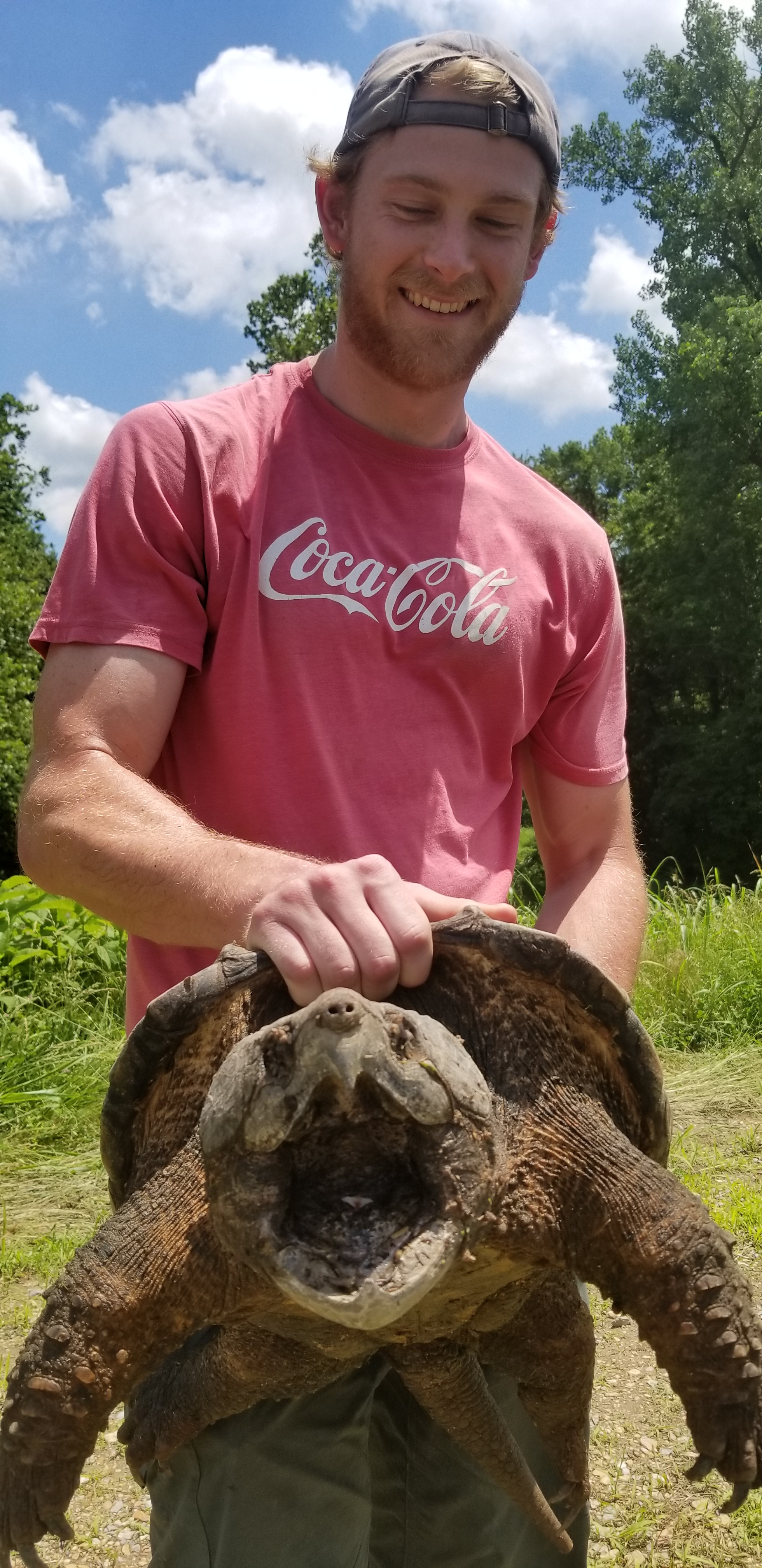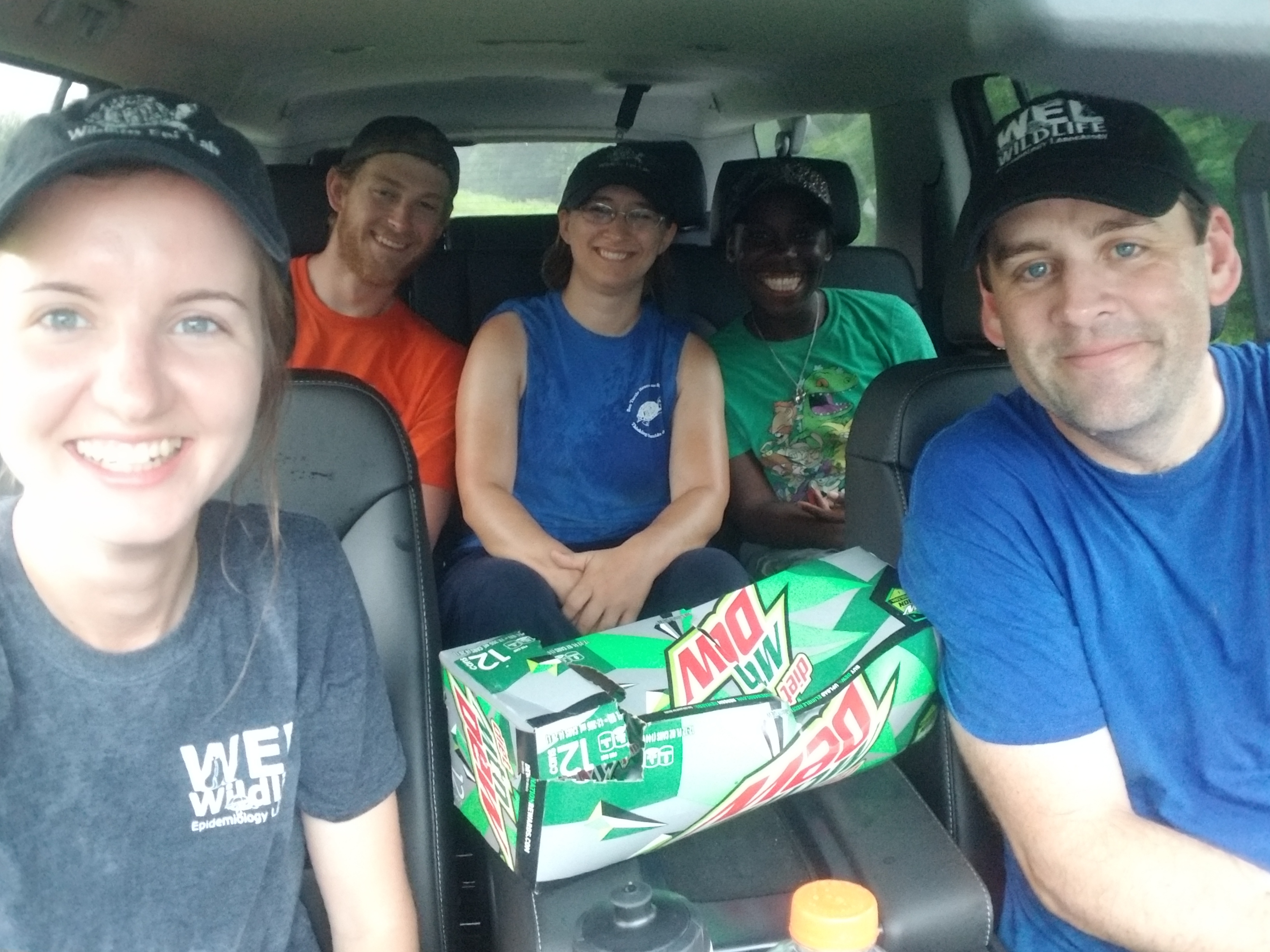This week we had the opportunity to work with some real monsters: Alligator Snapping Turtles (AST’s)!! As part of a reintroduction project headed by our biologist lab mate, Ethan, we were able to help take health samples from turtles that have been raised and reintroduced to the wild. Tracking, diving for, and wrangling these bitey turtles was truly an experience we’ll never forget.
To catch these little chompers, Ethan used radio telemetry which allows you to find the signals being given off by transmitters glued onto the turtle shells with a radio connected to an antenna. Once Ethan found where the signal was the strongest, other wet-suit wearing biologists would dive down, blindly feel around for the spiky shells of the turtles, and hope to come back up to the surface with all their fingers intact (joking, but not really). Finding the turtles proved to be a real challenge as the water was so murky you couldn’t see past an inch in front of your face and once a turtle got spooked enough, they would begin to swim circles around the crew or just take off down river. Many times the biologists would bring up handfuls of sticks or logs because they felt just like the backs of the turtles. We had some incredible catches thanks to our all-star diving crew of Sarah, Seth and Crandy (crawfish Andy, to differentiate from another Andy who studies plants). John even geared up in his hiking clothes and go into the water to give it a shot! While he didn’t come up with a turtle in his hands, he was a big help in finding a tricky turtle in a pile of logs.
Once we had captured a turtle, the next step was to hand it off to the vet crew (us) on shore where we got to get our hands on some turtles! Similar to our box turtle team, we performed physical exams, took blood, oral and cloacal swab samples. Because of how powerful the bite of an AST is, we didn’t take blood from the subcarapacial sinus above the head like in box turtles and Blanding’s turtles. Instead, we drew blood from the dorsal tail vein which involved carefully sticking a needle into the top of their tail in between vertebrae. We also performed physical exams and took shell measurements. Safe handling of these turtles was essential to avoid any finger chomping. An AST can bite extremely quickly and their heads have a wide range of motion to bite in many different directions. So the safest way to handle them is by holding the back of their shells and avoiding putting your hands near their face. The can’t reach their heads up and backwards as sharply as common snapping turtles can so when handling the bigger AST’s, it is also safe to grab onto the carapace (the top half of their shell) right above their head from behind. For the larger turtles, more weight was necessary to keep them still for examination as they are very strong! We only had one biting casualty this week but thankfully all fingers were still intact afterwards and no humans or turtles were harmed.
Alligator snapping turtles are unique from common snapping turtles with two main characteristics: they have spikes down their carapace (top of the shell), and lures in their mouthes. The lure is an apparatus on the tongue that resembles a worm used to lure their prey when sitting underwater ready to ambush.
We had a few turtles this week that really blew us away with their size! One turtle was found nestled underneath a floating pile of debris in a small pond was about 30 lbs and another turtle that Ethan bravely wrestled with underwater was 70 lbs! These monsters’ heads were almost the size of our heads and could definitely have caused some serious damage had they bitten us. John was lucky enough to draw blood on the 30 lb turtle and Taylor got blood from the 70 lb turtle! Some other highlights from the week include John and Dr. Laura taking down team Dr. Allender/Ethan in euchre, Marta getting herself suck in quickmud and needing to be saved by John, and all of us getting to handle these dinosaurs without getting nibbled on (mostly)!

